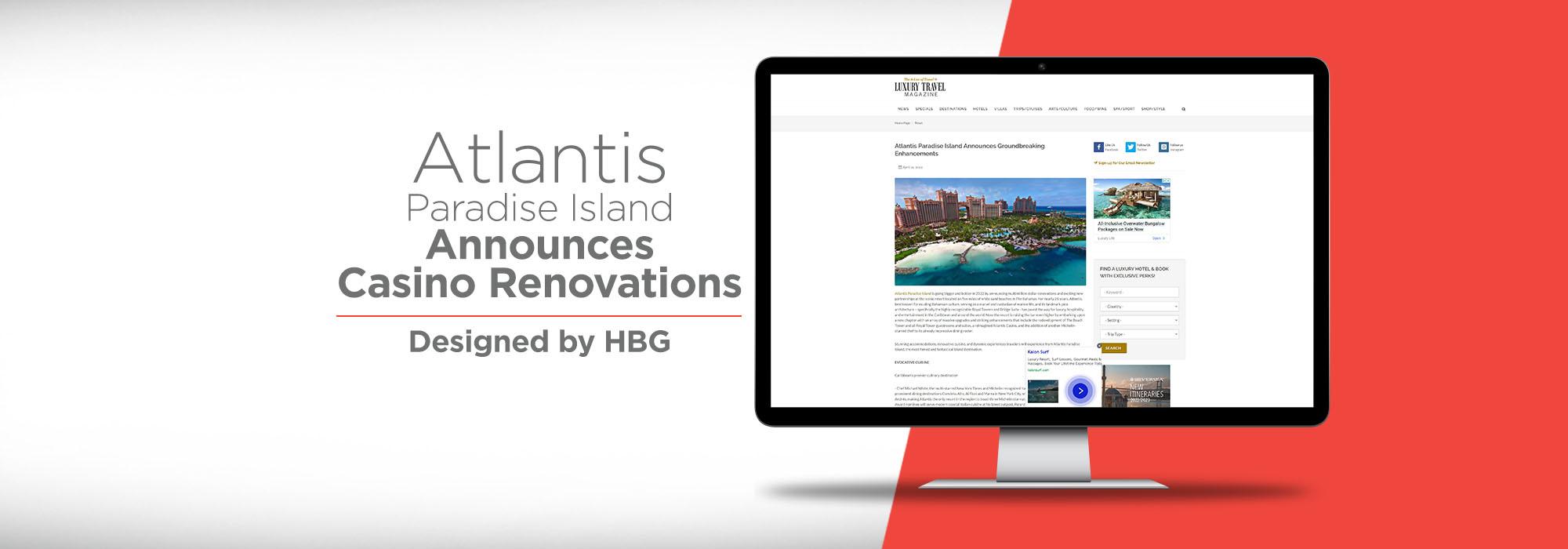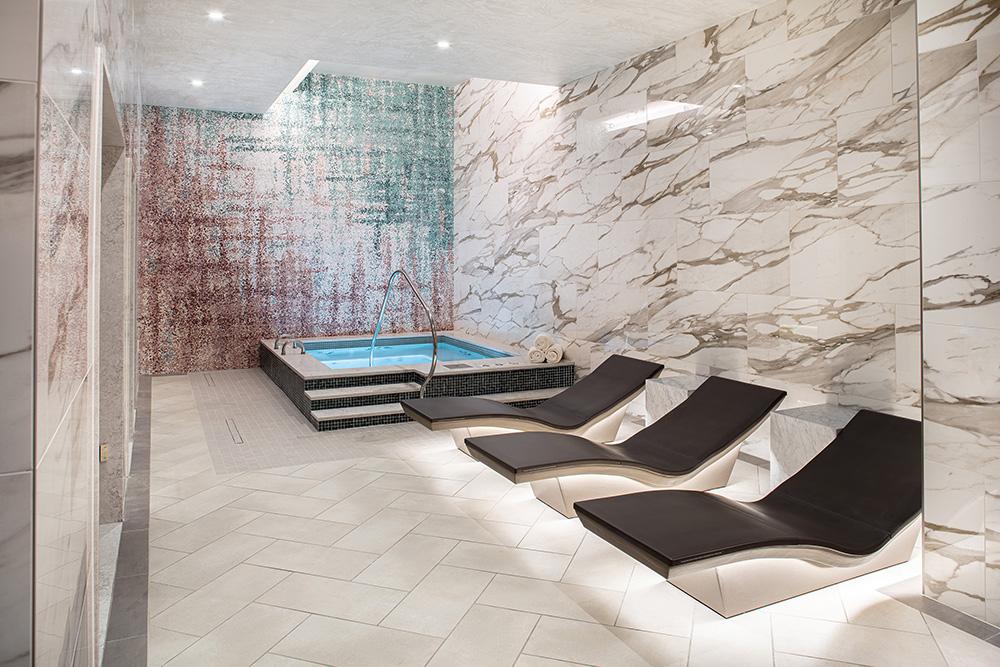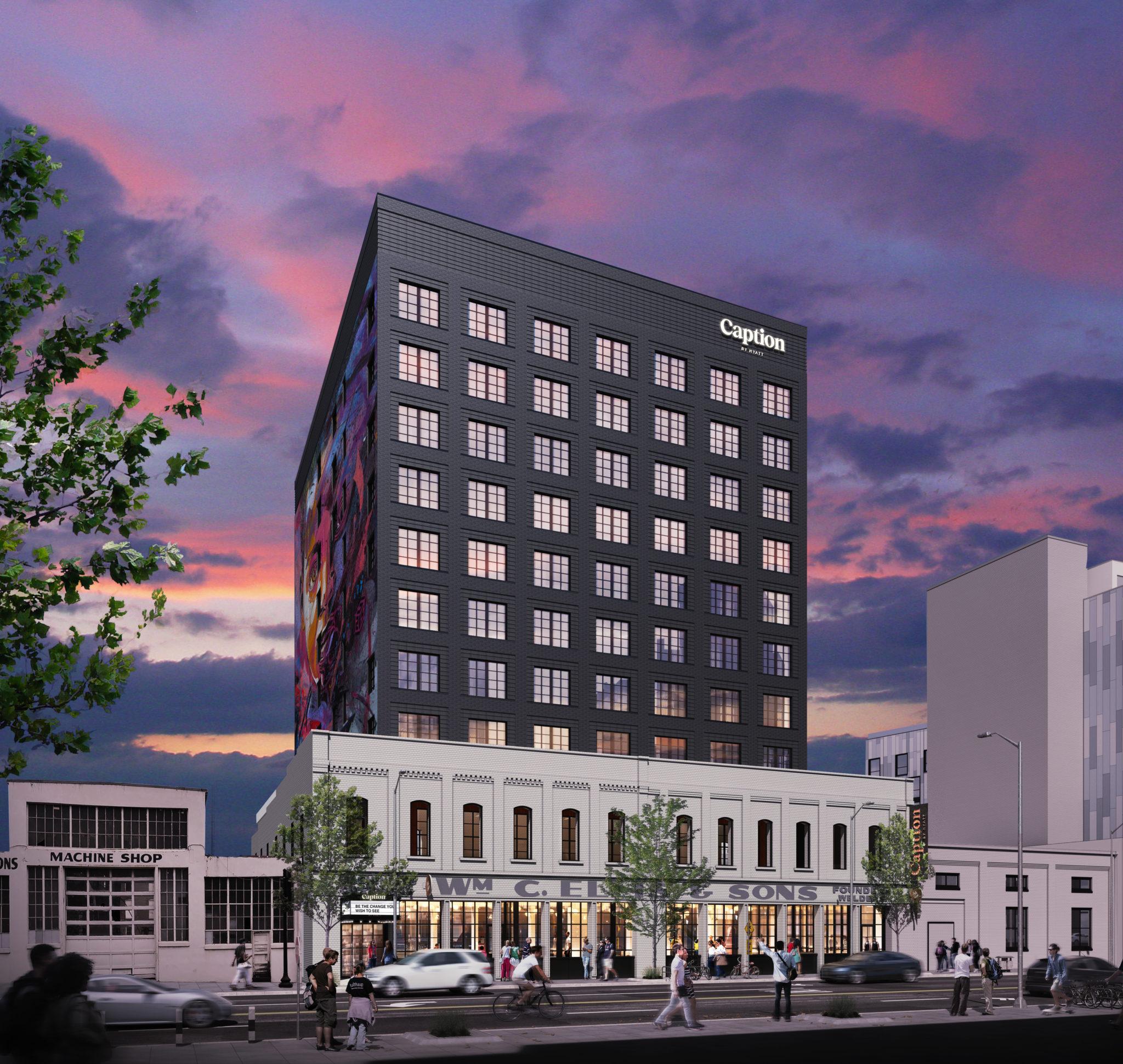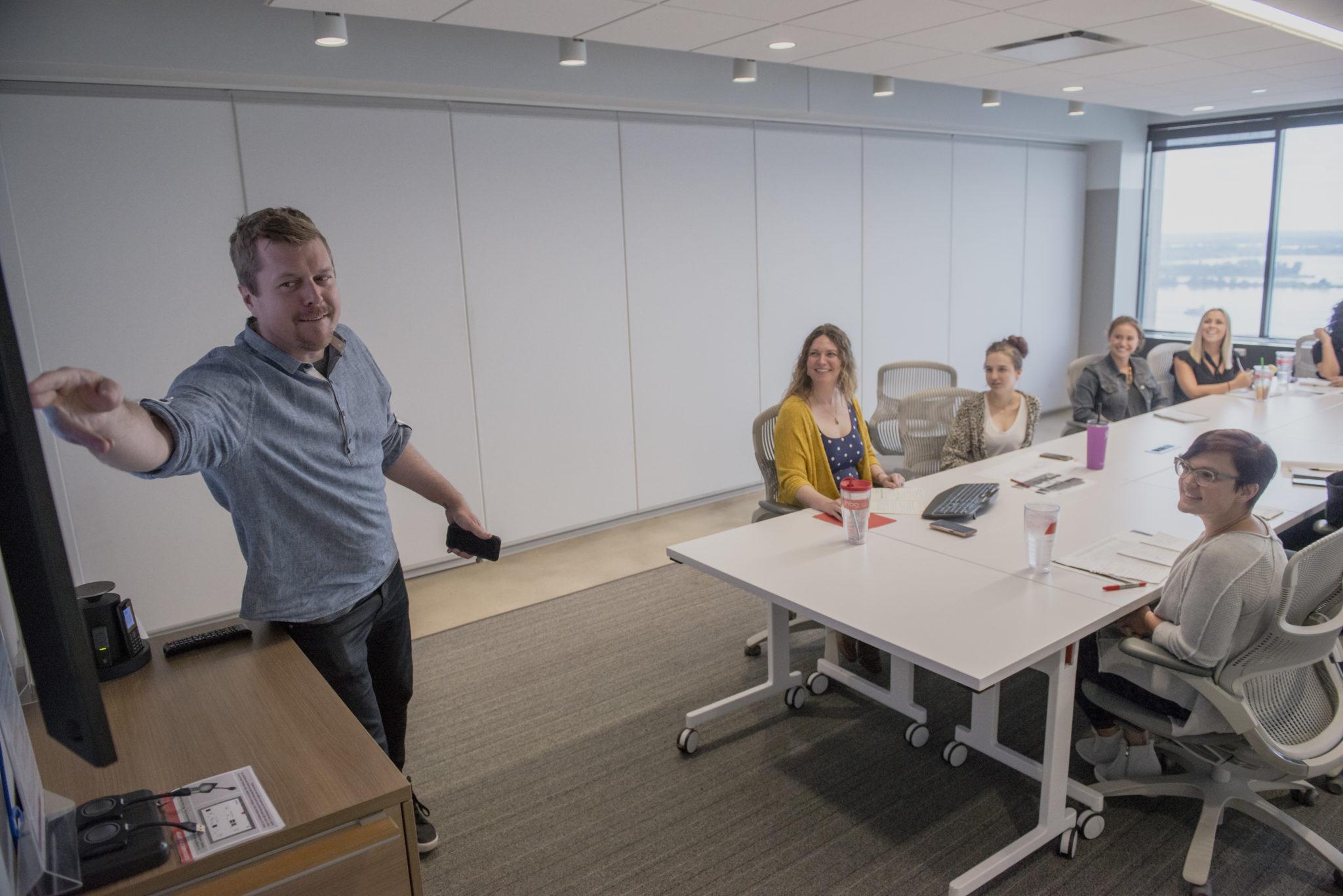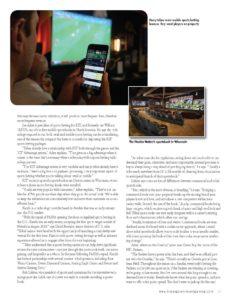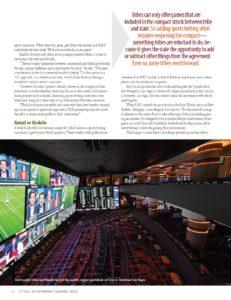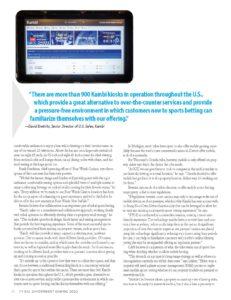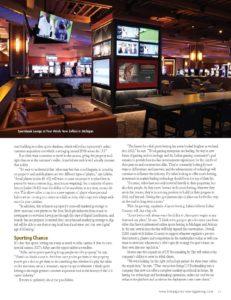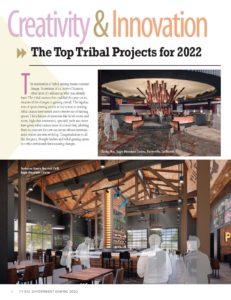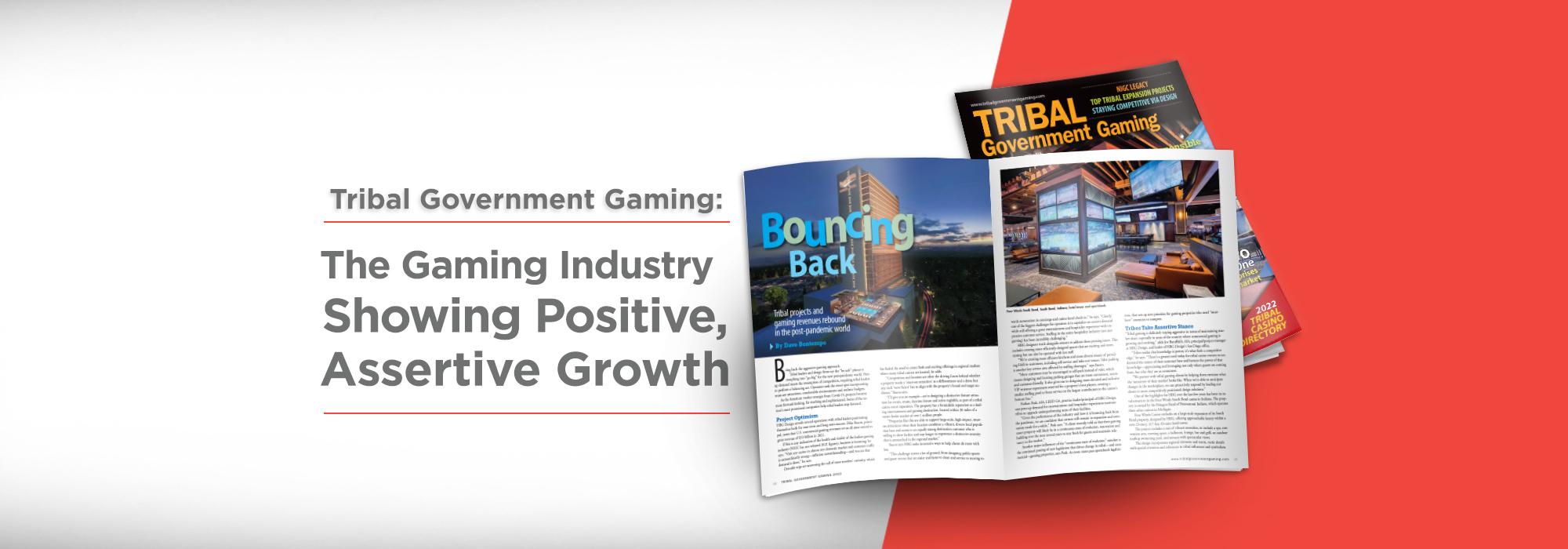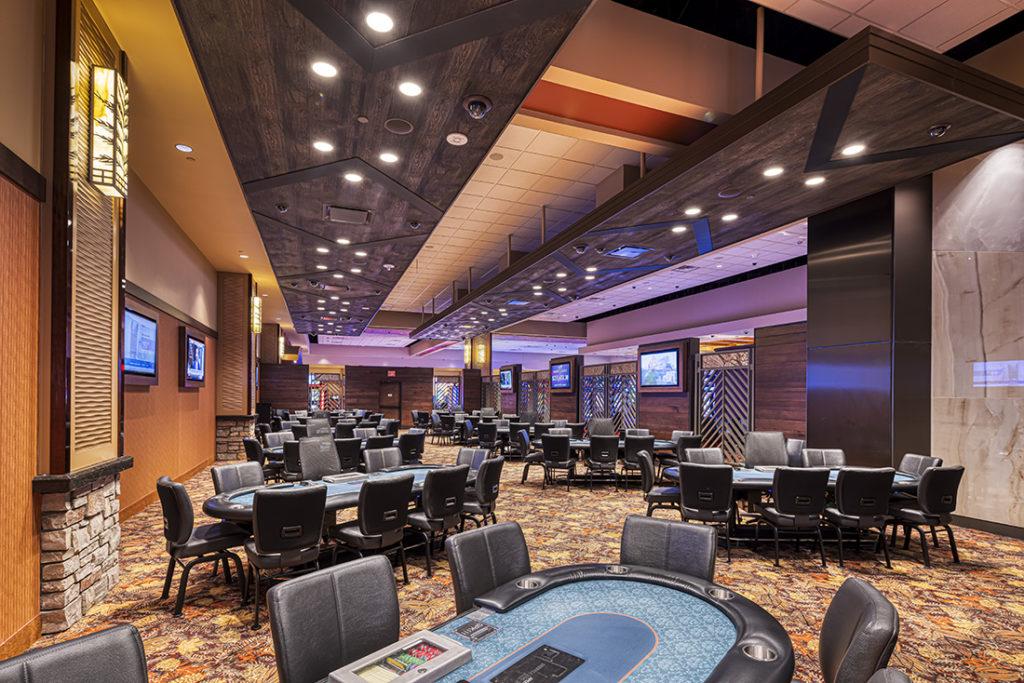Atlantis Paradise Island Announces Casino Renovations
HBG Design is beyond thrilled to be a part of the exciting casino renovations at Atlantis Paradise Island!
Atlantis Paradise Island is going bigger and bolder in 2022 by announcing multimillion-dollar renovations and exciting new partnerships at the iconic resort located on five miles of white sand beaches in The Bahamas, including casino renovations being designed by Top 10 hospitality and entertainment designers, HBG Design.
As featured in LuxuryTravelMagazine.com - Read more here about the new project enhancement happening at Atlantis Paradise Island.
For nearly 25 years, Atlantis, best known for exuding Bahamian culture, serving as a marvel and custodian of marine life, and its landmark pink architecture – specifically the highly recognizable Royal Towers and Bridge Suite - has paved the way for luxury, hospitality and entertainment in the Caribbean and around the world. Now the resort is raising the bar even higher by embarking upon a new chapter with an array of massive upgrades and striking enhancements that include the redevelopment of The Beach Tower and all Royal Tower guestrooms and suites, a reimagined Atlantis Casino, and the addition of another Michelin-starred chef to its already impressive dining roster.
A WORLD-CLASS WONDERLAND
Fostering fun and leisure with experiential moments, including gaming renovations at Atlantis Paradise Island being designed by HBG Design.
The Atlantis Casino will undergo a refresh that will include modern finishes, shimmering textures, celestial fixtures, and flowing lines echoing the refractions of the sea. Upon entering the Atlantis Casino, guests will be welcomed with a grander and even more elegant sense of space. Other updates will include the expansion of the Atlantis Casino’s two on-site lounges, an exciting high-limit slots lounge, and an expansion of the exclusive gaming salon.
"We could not be more excited for all of the developments coming to Atlantis this year," said Audrey Oswell, President and Managing Director of Atlantis Paradise Island. "With these incredible additions, we are continuing Atlantis' legacy of offering guests endless, immersive experiences during their stay."
Gun Lake Casino Breaks Ground on Phase 5 Expansion
Gun Lake Casino Breaks Ground on Phase 5 Expansion:
Addition to feature 15-story hotel with a 32,000 square foot pool and events complex
(Wayland, Mich.) – Gun Lake Casino has officially broken ground on the upcoming $300-million addition to the west side of the property. The expansion will transform the casino into a hotel resort with countless amenities.
“Phase 5 will transform the property into becoming a first-class destination resort. Without question, its design attributes will create a unique entertainment experience,” said Gun Lake Casino CEO, Sal Semola.
“Over the past eleven years, the Gun Lake Tribe and our Gun Lake Casino Team Members have worked tirelessly to make this all a possibility. This is just the next step towards making our property the premier entertainment destination in the Midwest.”
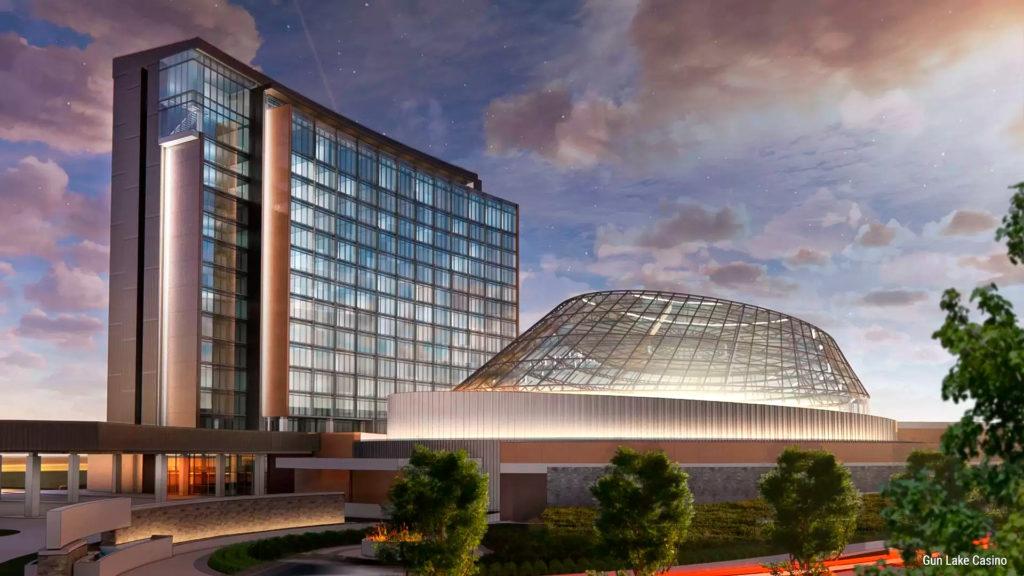
Gun Lake Casino Hotel Expansion
The resort will feature multiple pools inside a six-story pool and events complex with 32,000 square feet of space that can transform into a concert venue, banquet center and entertainment venue. The hotel will consist of 15 floors with 252 rooms including 30 suites, and a two-level suite. 350 jobs are expected to be created as part of the addition to the property.
“Job creation is one of the many things we’re excited about with this expansion,” Semola added. “We take great pride in providing career opportunities with outstanding benefits for people in our community. These jobs will include guest relations, housekeeping, entertainment, and several other departments.”
Sandhill Café will make its return inside the new expansion, featuring a three-meal venue designed around 137 seats which features a flexible layout for individual and group settings. Gun Lake and the surrounding area will have a large influence on the color palette inside of each Guestroom and Suite.
“We are thrilled to begin taking the next steps in expanding not only Gun Lake Casino’s offerings but also our career opportunities to those in the surrounding communities,” said Tribal Chairman Bob Peters. “We are committed to continuously investing in the future of the Tribe, the community, and our current and future Team Members.”
World-renowned HBG Design has taken the reins on the layout of Phase 5. HBG has been creating memorable and transformative Guest experiences for over 42 years in over 40 Sovereign Nations across the United States.
“HBG Design is excited to be leading the architecture and interior design for the $300-million expansion of Gun Lake Casino featuring a 252 room 4-diamond hotel, spa, and multi-purpose [pool and events complex],” said Paul Bell, AIA, Principal of HBG Design. “The [pool and events complex] is sure to become a must-see feature."
"A resort pool by day and performance complex by night, the glass-enclosed circular structure will generate an immense sense of energy inside and out, while offering a variety of complementary entertainment and gathering opportunities for resort guests and entertainment-seekers from the tri-state area. Our team is dedicated to helping the Gun Lake Tribe fulfill its vision for the future of its popular entertainment facility. We have enjoyed working diligently together with the Tribe and Casino Operations to envision a unique expansion design that sets them on that path to success.”
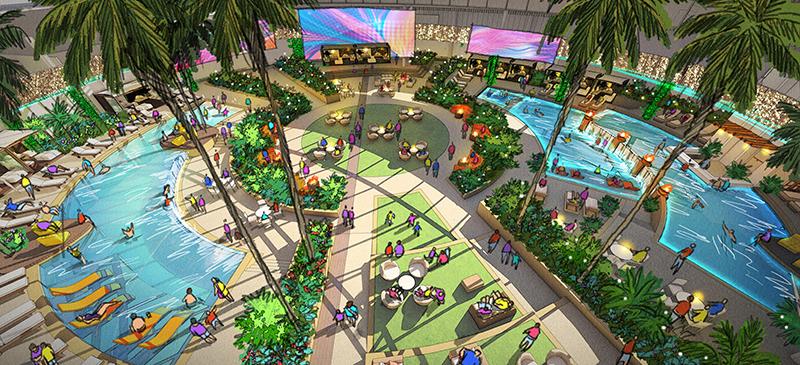
The [pool and events complex's] dynamic form is sculpted by the sun’s daily path across the site and will reflect the dynamic sky from all four of Michigan’s vivid seasons.
The top two floors of the hotel will feature a two-story suite with a unique living space showcasing a grand staircase, double-height window, and residential elevator. Guests can also enjoy a full-service bar, billiards table, and a larger bar upstairs with both indoor and outdoor dining and lounge areas.
Construction on the west side of Gun Lake Casino will begin in late May with an expected completion of March 2025.
About Gun Lake Casino
Gun Lake Casino, a premier gaming and entertainment destination, is located off Exit 61 on U.S. 131, halfway between Grand Rapids and Kalamazoo. The casino features a variety of thrilling gaming options, including 2,500 state-of-the-art slot machines, 47 table games, a modern sportsbook, and keno. Gun Lake Casino is comprised of high-quality dining amenities, including Shkodé Chophouse with a contemporary take on American cuisine, CBK inspired by the brewery culture in Michigan, 131 Sportsbar & Lounge with over 1,000 square feet of viewing surface for panoramic views of live events, and Harvest Buffet featuring fresh ingredients, cooked to order.
Gun Lake Casino is owned by the Match-E-Be-Nash-She-Wish Band of Pottawatomi. For more information, visit www.gunlakecasino.com.
Phase 5 Hotel & Resort Facts Sheet
- Layout/Structure
• 15 Floors
• 252 Rooms
• 30 Suites
• Two-Story Suite on top floors - Pool and events complex
• 32,000 Square Feet
• Three pools (Family, 21+ & VIP)
• Swim-up bar
• Live palm trees and tropical flora
• 82-degrees year-round
• Live entertainment stage capable of hosting large events with a 2,400-person capacity - Economic Impact
• Cost: $350 Million
• Estimated $650 Million in economic impact
• 350 jobs created - Other Amenities
• Sandhill Café featuring a three-meal restaurant and 137 seats
• New Gift Shop
• Lobby Bar
• Full-service Spa
• Relaxing pool and hot tub
• Business center and meeting space - Other Notes
• Scheduled Opening: March 2025
• Color palettes, designs of hotel and resort inspired by Gun Lake and surrounding landscape in the area
Read the news articles -
Gun Lake Casino breaks ground on new Hotel and [pool and events complex], by wwmt.com
American Spa Magazine Takes Us Inside Astral Spa
We had the chance to speak to Jessica Renee Rose, spa director at Astral Spa, about the new spa. Here's the scoop on Astral Spa.
Tell us a little bit about the spa’s design?
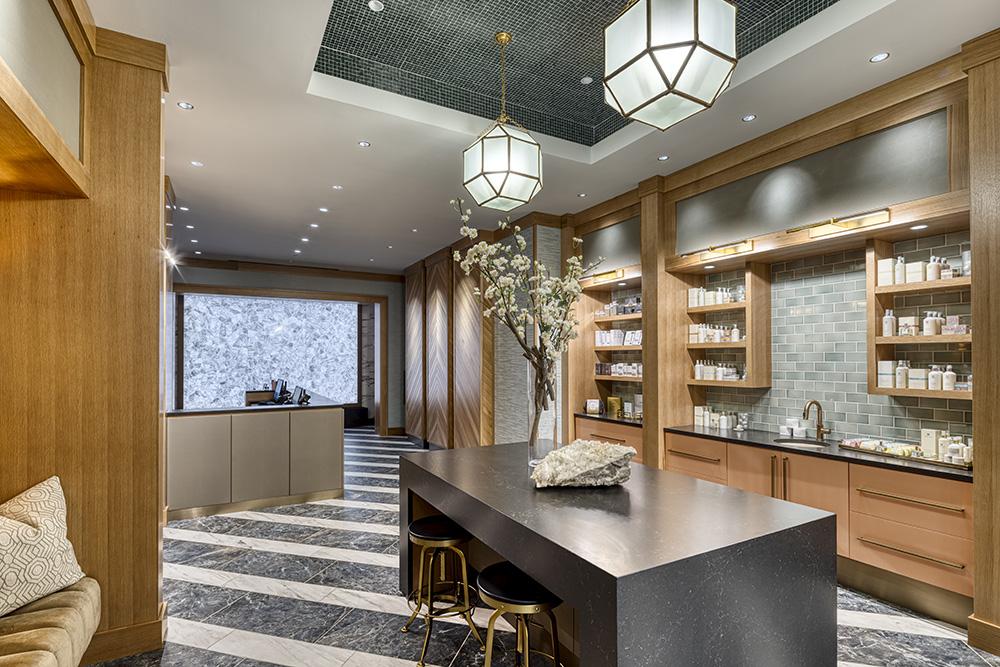 Our vision for Astral Spa was to create a unique experience that regional guests have never seen before. With multiple amenities, taking advantage of Hot Springs’ great history of entertainment, gambling, and relaxation, Astral Spa offers a throwback vibe with modern luxury which includes a cold room, steam room and infrared sauna, dipping pools, and needle showers.
Our vision for Astral Spa was to create a unique experience that regional guests have never seen before. With multiple amenities, taking advantage of Hot Springs’ great history of entertainment, gambling, and relaxation, Astral Spa offers a throwback vibe with modern luxury which includes a cold room, steam room and infrared sauna, dipping pools, and needle showers.
Marrying crisp modern lines with historical overtures, Astral Spa’s design led by HBG Design and WTS International celebrates the history of Hot Springs and Oaklawn’s thoroughbred horseracing in an era when ladies and gentlemen donned their best bespoke styles to see and be seen. Relaxing in the lounges, we want our guests to imagine what Hot Springs was like in the roaring ‘20’s yet be in contemporary comfort. The interior design is complemented by the 21st century bathhouse-inspired program and spa services menu developed by leading spa consultants and operators, WTS.
Can you please describe each of the treatment rooms?
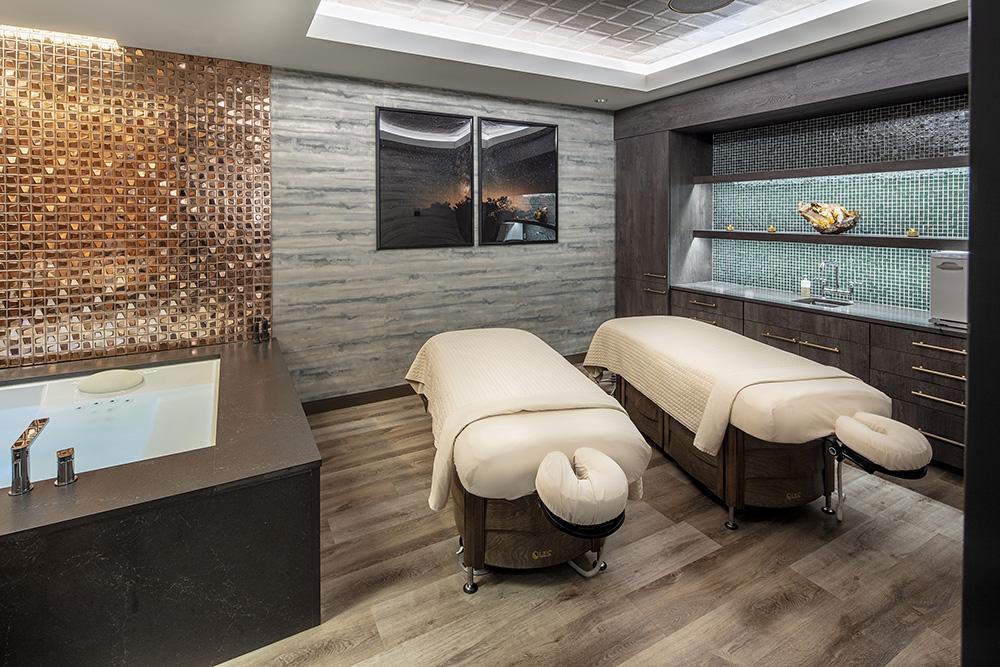 Designed for complete relaxation, the 2,035-square-foot treatment area rooms contain beautifully dressed beds with soft organic linens and warm cocooning cashmere blankets. The Duet Spa Suite allows two guests to share in a meaningful spa experience. This beautifully appointed suite offers coordinated treatments complete with a specialty duet soaking tub, reminiscent of a vintage bathhouse experience. This exclusive suite allows guests to take pleasure in an intimate spa journey within their own spa suite.
Designed for complete relaxation, the 2,035-square-foot treatment area rooms contain beautifully dressed beds with soft organic linens and warm cocooning cashmere blankets. The Duet Spa Suite allows two guests to share in a meaningful spa experience. This beautifully appointed suite offers coordinated treatments complete with a specialty duet soaking tub, reminiscent of a vintage bathhouse experience. This exclusive suite allows guests to take pleasure in an intimate spa journey within their own spa suite.
What makes the spa unique and sets it apart from other spas in the area?
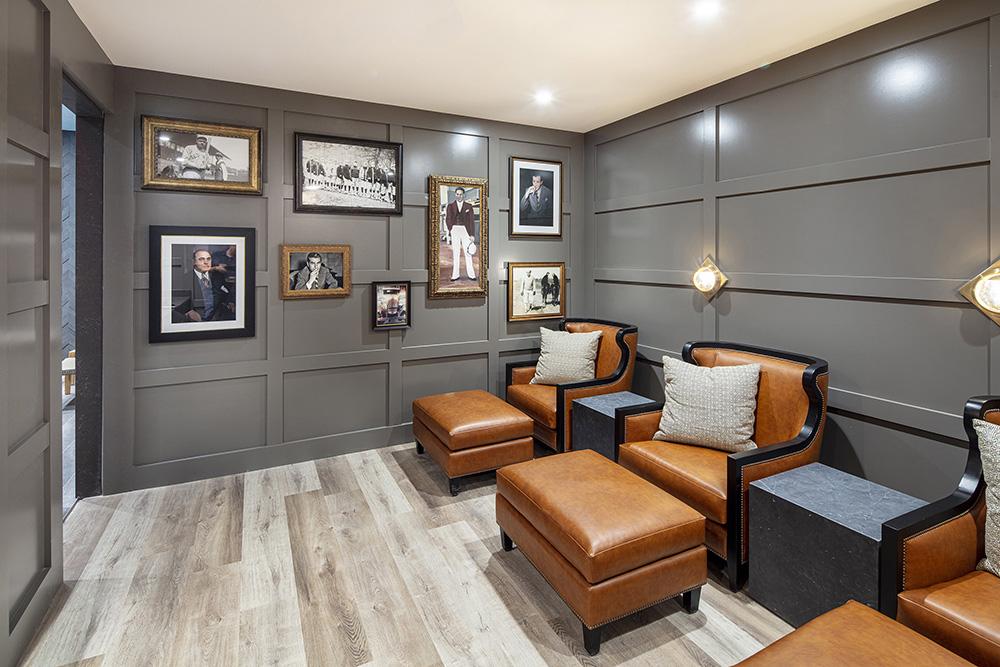 The resort’s new full-service spa and wellness experience is the first major spa to be built in the Spa City in more than a century. Guests can uniquely experience modern spa services in a nostalgic setting, including:
The resort’s new full-service spa and wellness experience is the first major spa to be built in the Spa City in more than a century. Guests can uniquely experience modern spa services in a nostalgic setting, including:
- An array of spa services, including couples' massages, hydro-facials, hot stone treatments, and a full-day Journey of the Springs experience with several additional offerings.
- Dedicated 1,925-square-foot women’s spa and 1,500-square-foot men’s spa, each with distinctly tailored parlors, dressing room areas and aqua thermal lounges featuring vintage-inspired needle showers that harken to historical bathhouses.
- A 750-square-foot full-service salon, multiple private treatment areas, and a co-ed lounge with upholstered chaise lounges and the area’s only Himalayan salt wall.
- Unique hot/cold wellness circuits in the large women’s and men’s aqua thermal areas, allowing guests to ‘Heat, Cool, Rest, Repeat’ in vapor rooms, infrared saunas, ice lounges, vitality pools, and thermal loungers.
- An illuminated wall of quartz crystal, an important healing element, in the reception area references crystal mining popular in this area of Arkansas, in celebration of the region’s natural resources.
I think what sets us apart is the level of service we provide to the guest, the beautiful aqua thermal areas that are located in each the men’s and women’s areas, and the services that we provide.
How would you describe your typical clientele?
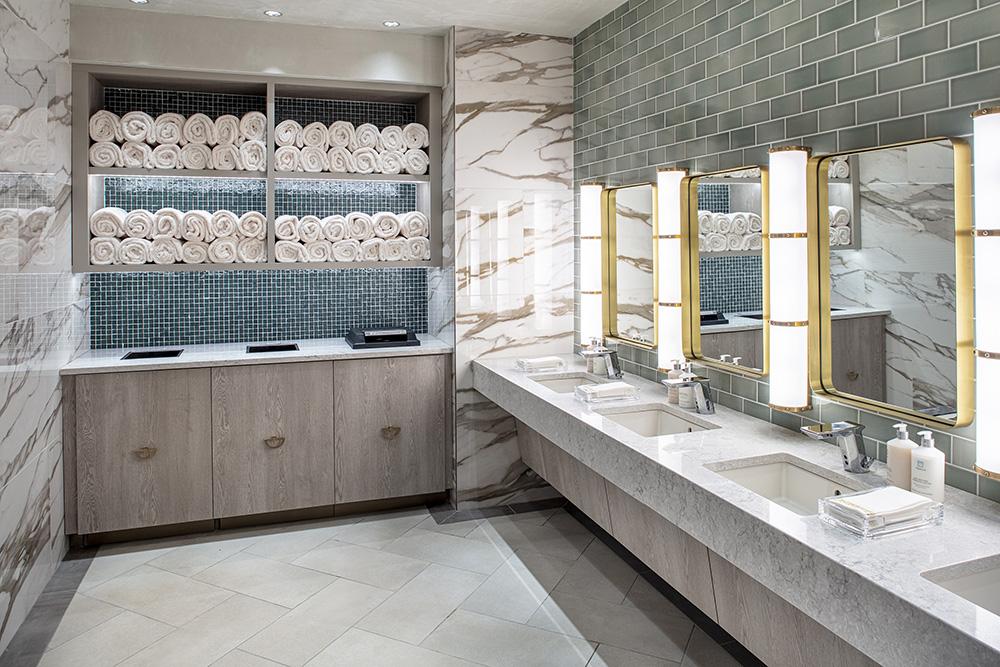 The typical clientele usually travels to Hot Springs for a weekend getaway from a city within a 200-mile radius of Hot Springs, AR. They usually come in for the weekend to see a horse race, gamble at the casino, or are celebrating a birthday or anniversary. Hopefully soon, we will be seeing guests that are specifically traveling here because of the spa. We see quite a few guests from Little Rock (the closest major city and the capital of Arkansas), as well as Memphis, TN, and Shreveport, LA.
The typical clientele usually travels to Hot Springs for a weekend getaway from a city within a 200-mile radius of Hot Springs, AR. They usually come in for the weekend to see a horse race, gamble at the casino, or are celebrating a birthday or anniversary. Hopefully soon, we will be seeing guests that are specifically traveling here because of the spa. We see quite a few guests from Little Rock (the closest major city and the capital of Arkansas), as well as Memphis, TN, and Shreveport, LA.
How are you marketing the spa to your hotel guests?
When a guest checks into the hotel, there is a key card offer from the spa for a $25 spa credit for a service 50-minutes or longer Monday through Thursday. Even if the guest isn’t here on a weekday, they could bring the card back during a week day to redeem their offer. The spa is also mentioned in their hotel reservation confirmation email, and present in the iPad compendium in their room. The in-room toiletries are from our bodycare line, Zents, that state they are available for purchase in the spa.
How are you marketing the spa to local guests or those not staying at the hotel?
 We run monthly specials that we send out in an email to our spa database, as well as post on the spa’s website under the Seasonal Treatments Tab. We have a pretty large following on Facebook from local residents. We have weekday treatment prices to encourage local guests to come to the spa during those days. In December, we launched a Sip & Spa menu that is a spa happy hour to encourage local guests to come in after work. This promotion is only available from Monday through Thursday from 2 p.m. – 7 p.m. Guests can choose a package, or one of our express services during those times as well as use of our full-service locker rooms and includes one glass of bubbly.
We run monthly specials that we send out in an email to our spa database, as well as post on the spa’s website under the Seasonal Treatments Tab. We have a pretty large following on Facebook from local residents. We have weekday treatment prices to encourage local guests to come to the spa during those days. In December, we launched a Sip & Spa menu that is a spa happy hour to encourage local guests to come in after work. This promotion is only available from Monday through Thursday from 2 p.m. – 7 p.m. Guests can choose a package, or one of our express services during those times as well as use of our full-service locker rooms and includes one glass of bubbly.
Can you tell me a little bit about the creation of the menu?
I worked with Susie Hammer, vice president of spas at WTS International, while creating the spa menu. I researched spa offerings in the area, as well as other casino resort spas, and Forbes Five-Star-rated spas. I wanted to keep the menu simpler, so the guest didn’t feel overwhelmed trying to decide between too many selections. I really wanted the guest to feel like we were creating something incredibly special just for them. After quite a few drafts, it went to the management team and the owners for edits and approvals.
We do offer signature Journeys that range 2 to 4 hours. The Journey of the Springs was inspired by our location. After you have changed into your robe and slippers, you are greeted in the parlor with a warm neck wrap, and a heated mineral foot soak and a cup of hot tea made from one of the local hot springs. Then in the treatment room, you receive a scrub, a soak with a eucalyptus and mint blend to draw in the vapors, an 80-minute massage with chakra balancing with locally sourced crystals, and a Rose Quartz Lift and Contour Facial. Throughout the journey, the guest is given a flight of water from the local hot springs in town. When the guest checks out, they are given an exclusive Journey of the Springs bath bomb made local in the state of Arkansas from Cotton Halo.
What are most spa-goers looking for when they visit your spa?
 The majority of spa-goers are looking to relax and are typically celebrating a special event in their life. The top-selling service is our 50-minute Heavenly Massage, followed closely by our 50-minute Couples Massage. Massage is 68 percent of our business.
The majority of spa-goers are looking to relax and are typically celebrating a special event in their life. The top-selling service is our 50-minute Heavenly Massage, followed closely by our 50-minute Couples Massage. Massage is 68 percent of our business.
What treatments are a harder sell? How do you promote them?
Our nail treatments are the hardest sell. We include them in our monthly promotions, and encourage other providers to cross promote.
What product lines do you carry at the spa?
Babor, Knesko, Foreo, NuFace, Zents, SachaJuan, Clove + Hallow, Jala Clothing, VitaJuwel Water Bottles
What do you find your biggest challenge to be, and how do you meet that challenge?
The biggest challenge is what everyone is currently facing, COVID--challenges with staffing, business levels, product arrival time, etc. I am meeting the challenge by being as organized as possible. We have a very heightened sanitation practice, we maximize our revenue on the busy days, so the slower days don’t hurt as much, and try to make sure I’m allowing ample time for the ordering process.
What plans do you have for the future?
For the spa, to become not only to be a great amenity of this amazing property, but to also become the reason people travel to Hot Springs.
HOTELS Magazine Announces 'Caption by Hyatt' Memphis Hotel Design
https://www.hotelsmag.com/news/hyatt-gets-ready-to-launch-caption-brand/
Hyatt is Remixing Hospitality With Planned Launch of Caption by Hyatt Lifestyle Brand in Memphis This Summer
Scheduled for Summer 2022 136 Rooms Hotel website
Caption by Hyatt Beale Street Memphis will introduce self-activated, responsibly designed guestrooms, distinct dining experiences, and tech-forward, vibrant social spaces.
Project architecture and interiors by HBG Design.
Celebrating the launch of its newest lifestyle brand, Hyatt Hotels Corporation (NYSE: H) is proud to announce the introduction of the Caption by Hyatt brand with the planned summer 2022 opening of the 136-room Caption by Hyatt Beale Street Memphis in Tenn. Situated in the heart of famed and vibrant Beale Street, the highly anticipated upscale, select-service hotel will introduce a dynamic hospitality experience with an unmistakable neighborhood feel. The Caption by Hyatt brand is also expected to grow in key global leisure markets through 2024, including Shanghai, Tokyo, and more.
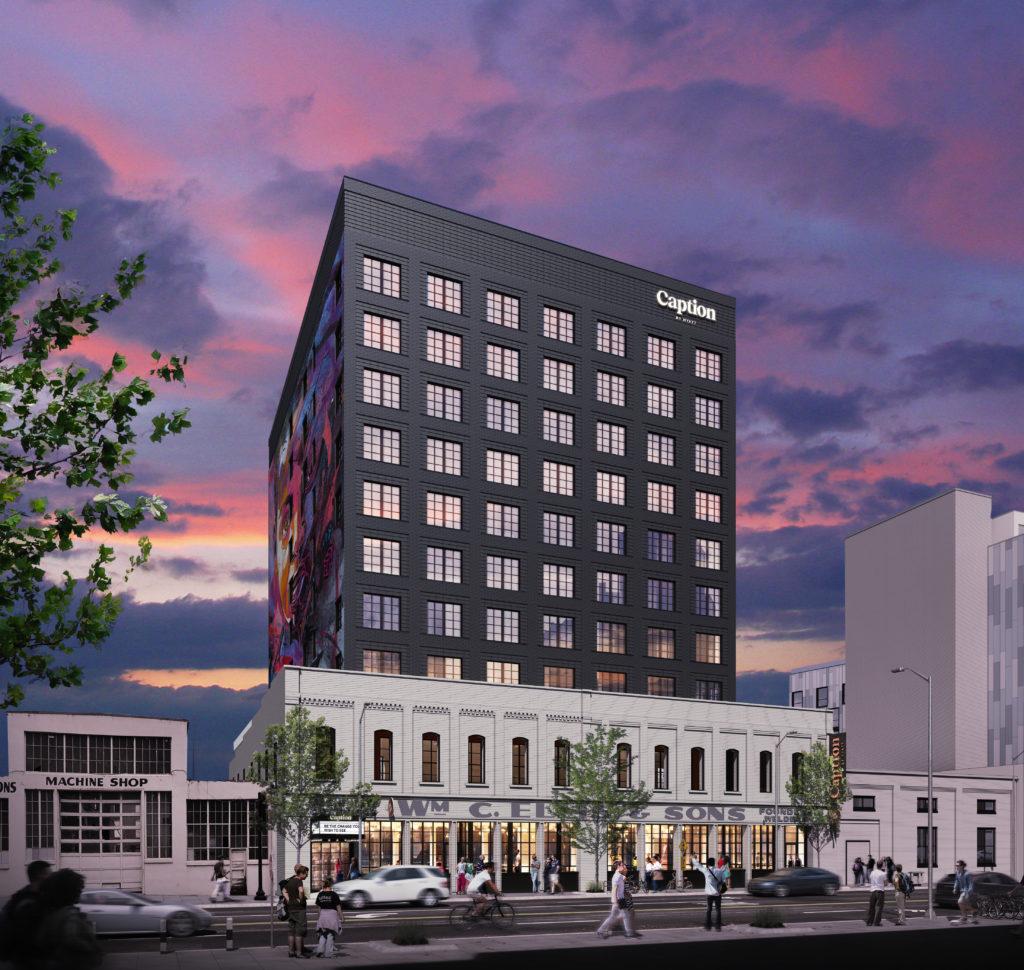 Caption by Hyatt hotels will combine the design and comfort of an upscale, lifestyle-forward hotel with the flexibility of a select-service property. Grounded in caring for people and place and creating connections between them, the Caption by Hyatt brand is committed to hiring diverse talent, vendors, artisans, and suppliers - and celebrating the diversity of people in the communities in which Caption by Hyatt hotels will be located.
Caption by Hyatt hotels will combine the design and comfort of an upscale, lifestyle-forward hotel with the flexibility of a select-service property. Grounded in caring for people and place and creating connections between them, the Caption by Hyatt brand is committed to hiring diverse talent, vendors, artisans, and suppliers - and celebrating the diversity of people in the communities in which Caption by Hyatt hotels will be located.
Upcycled & Community-Inspired Design and Décor
By rethinking how spaces are constructed, how materials are used, and how art and accessories are implemented, Caption by Hyatt hotels will create an environment that feels more authentic and playful, but also more lasting and responsible.
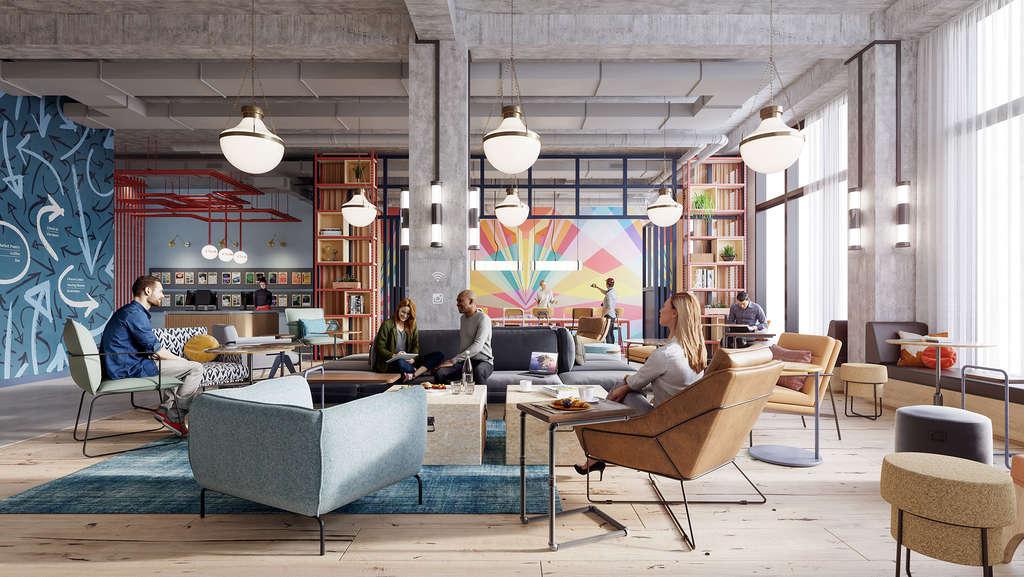 Reflective of the brand's eclectic contemporary-meets-urban industrial aesthetic, the hotel will feature light-filled contemporary spaces with a strong industrial flare. Designed by HBG Design, Caption by Hyatt Beale Street Memphis will be integrated into the historic main building of Wm. C Ellis & Sons Ironworks and Machine Shop, one of the earliest and longest-running businesses in the city. The historic building will house the hotel's ground and second floors, and a new 136-guestroom tower will rise above, offering guests spectacular views of the Mississippi River and Memphis skyline. The property will combine a layering of colors, textures, and hand-painted murals that nod to the storied city it calls home.
Reflective of the brand's eclectic contemporary-meets-urban industrial aesthetic, the hotel will feature light-filled contemporary spaces with a strong industrial flare. Designed by HBG Design, Caption by Hyatt Beale Street Memphis will be integrated into the historic main building of Wm. C Ellis & Sons Ironworks and Machine Shop, one of the earliest and longest-running businesses in the city. The historic building will house the hotel's ground and second floors, and a new 136-guestroom tower will rise above, offering guests spectacular views of the Mississippi River and Memphis skyline. The property will combine a layering of colors, textures, and hand-painted murals that nod to the storied city it calls home.
A commitment to sustainability will also be incorporated at every level of the brand, including prohibiting zero single-use plastics, placing hydration stations on every floor and utilizing materials with recycled content as well as materials that improve with age and use.
Thoughtfully placed graphic decals provide unique wayfinding throughout the hotel to help inform guests on how to interact with the property. From caption bubbles that lead to hydration stations, to playful wall illustrations showing guests where to hang and store their belongings, spaces will be designed to directly answer questions and highlight important features.
The Caption by Hyatt brand's signature marquee hotel signage will adorn the hotel's dual entrances, leading guests and locals into the all-day, multi-functional lounge space, Talk Shop.
Intentional Culinary and Social Spaces that Encourage Connection
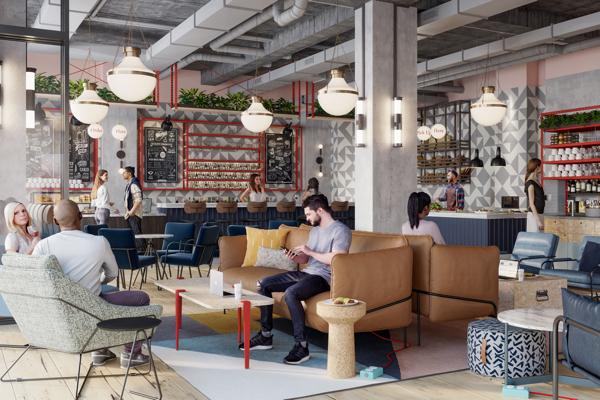 The heart of Caption by Hyatt Beale Street Memphis is Talk Shop, the brand's reimagined arrival experience where guests will enjoy a lively welcome area, all-day lounge and workspace, coffee shop, eatery, grab-and-go artisanal market and cocktail bar.
The heart of Caption by Hyatt Beale Street Memphis is Talk Shop, the brand's reimagined arrival experience where guests will enjoy a lively welcome area, all-day lounge and workspace, coffee shop, eatery, grab-and-go artisanal market and cocktail bar.
To cater to today's guests who crave seamless, instantaneous access, the brand experience will also feature a streamlined check-in, mobile key, and mobile-order food service. Guests will also have access to room keys in Apple Wallet which allows World of Hyatt members to seamlessly and securely tap their iPhone or Apple Watch to unlock guestrooms and key card-protected common areas like gyms, pools, and elevators - no need to open an app or handle a traditional plastic room key.
In collaboration with Union Square Hospitality Group, the Talk Shop concept was created to showcase menus featuring locally inspired all-day fare and regional favorites with locally sourced ingredients in a spirited and upbeat setting. Talk Shop at Caption by Hyatt Beale Street Memphis will also include an expansive patio and beer garden with open fire pits and exposed brick that will be incorporated into the building's historic, decorative façade on Front Street. Here, guests can sip beers on tap from local beverage houses like Grind City Brewing and others. Signature culinary delights served at Caption by Hyatt Beale Street Memphis will include a creative all-day Hearth Bar that will feature an innovative assortment of locally baked breads and tasty spreads.
Functional and Vibrant Guestrooms
Each Caption by Hyatt hotel will offer a bold and irreverent guestroom design that features a work-and-play seating area and a highly functional bathroom design.
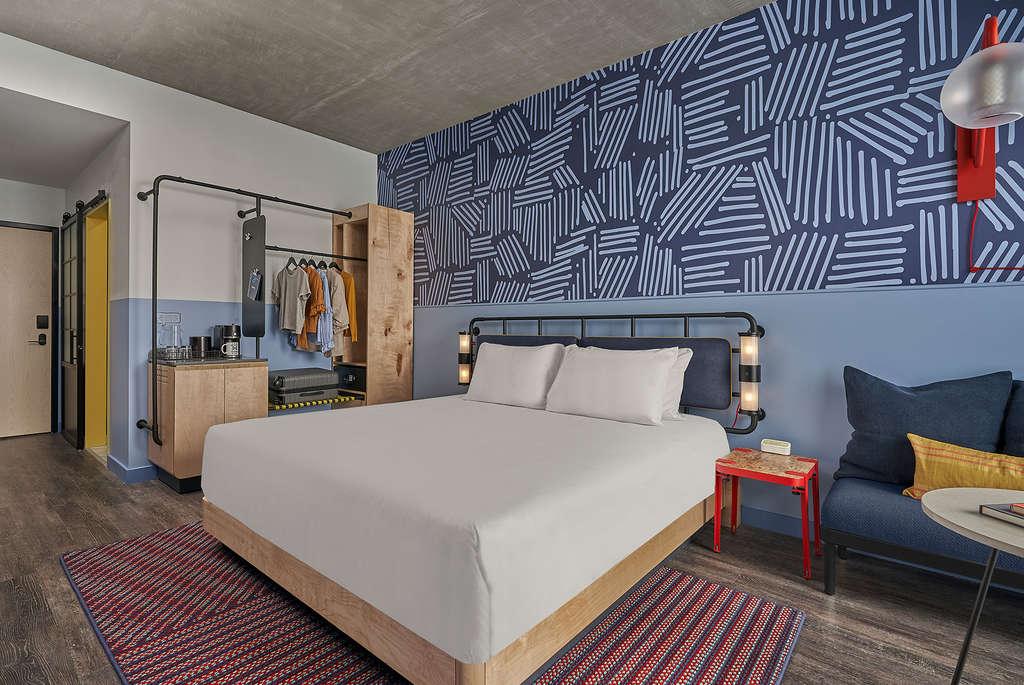 Accommodations at Caption by Hyatt Beale Street Memphis carry through the hotel's energy with bold colors and local-inspired graphic art to create an experience that's vibrant, unexpected, and has plenty of personality. Designed with form, function and fun top of mind, guestrooms feature repurposed non-traditional materials, modular closets and work-play lounges with accessible power outlets so guests can work, eat and relax separately from the sleeping area.
Accommodations at Caption by Hyatt Beale Street Memphis carry through the hotel's energy with bold colors and local-inspired graphic art to create an experience that's vibrant, unexpected, and has plenty of personality. Designed with form, function and fun top of mind, guestrooms feature repurposed non-traditional materials, modular closets and work-play lounges with accessible power outlets so guests can work, eat and relax separately from the sleeping area.
Well-appointed design extends to each guestroom's spacious bathroom, where industrial barn-inspired doors slide open to reveal custom Memphis-themed wallcoverings, enclosed walk-in rain showers, large vanities with ample lighting and counter space that leaves plenty of room for makeup, shaving kits, toiletries and more.
Introducing the Caption by Hyatt Brand Globally
Set to be located in metropolitan and downtown markets as well as lifestyle mixed-use developments, Hyatt is planning four additional upcoming Caption by Hyatt locations throughout Asia, opening from 2023 through 2025.
For more information on the Caption by Hyatt brand, visit captionbyhyatt.com.
The term "Hyatt" is used in this release for convenience to refer to Hyatt Hotels Corporation and/or one or more of its affiliates.
Click here learn more about Caption by Hyatt's design story
InspireDesign Reveals the Inspired Mind of Practice Leader Nathan Peak
What energizes HBG Design’s new Practice Leader, Nathan Peak, as he takes on each new day? From good conversation that leads to fresh perspectives, to the freedom to let his body and mind run--InspireDesign magazine has the inside track on the personal and professional inspirations and collaborative mindset of HBG’s leader, Nathan Peak, AIA, LEED GA.
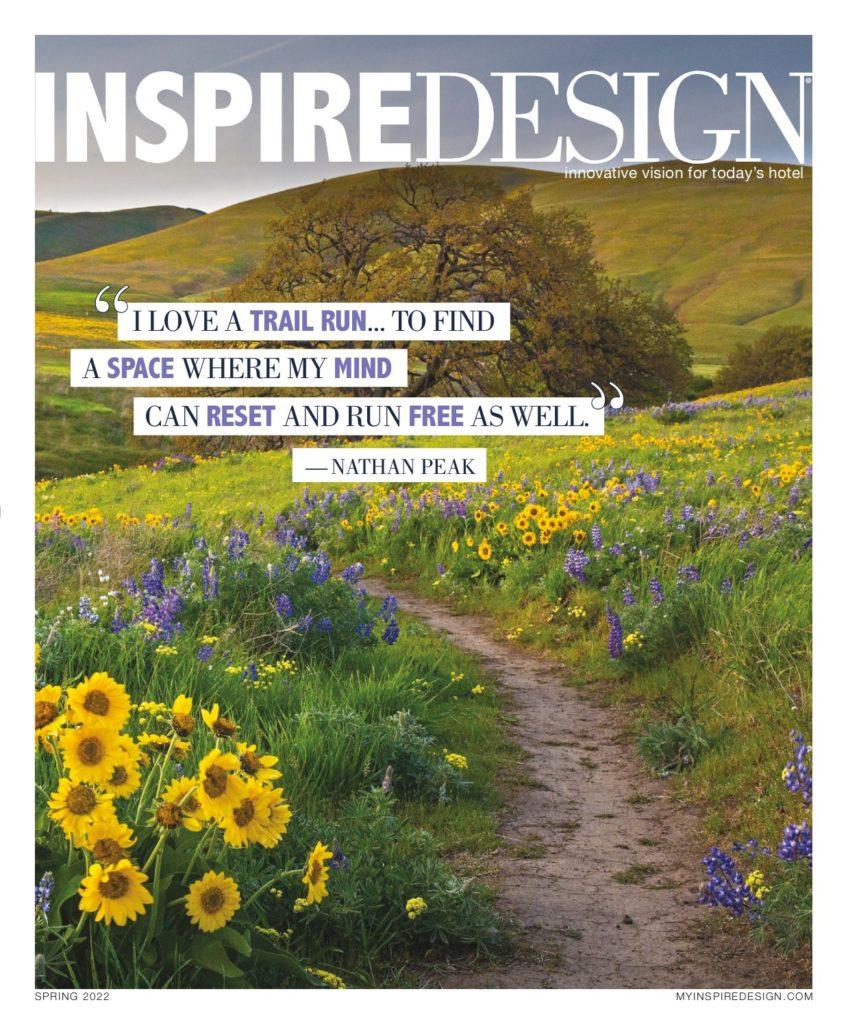
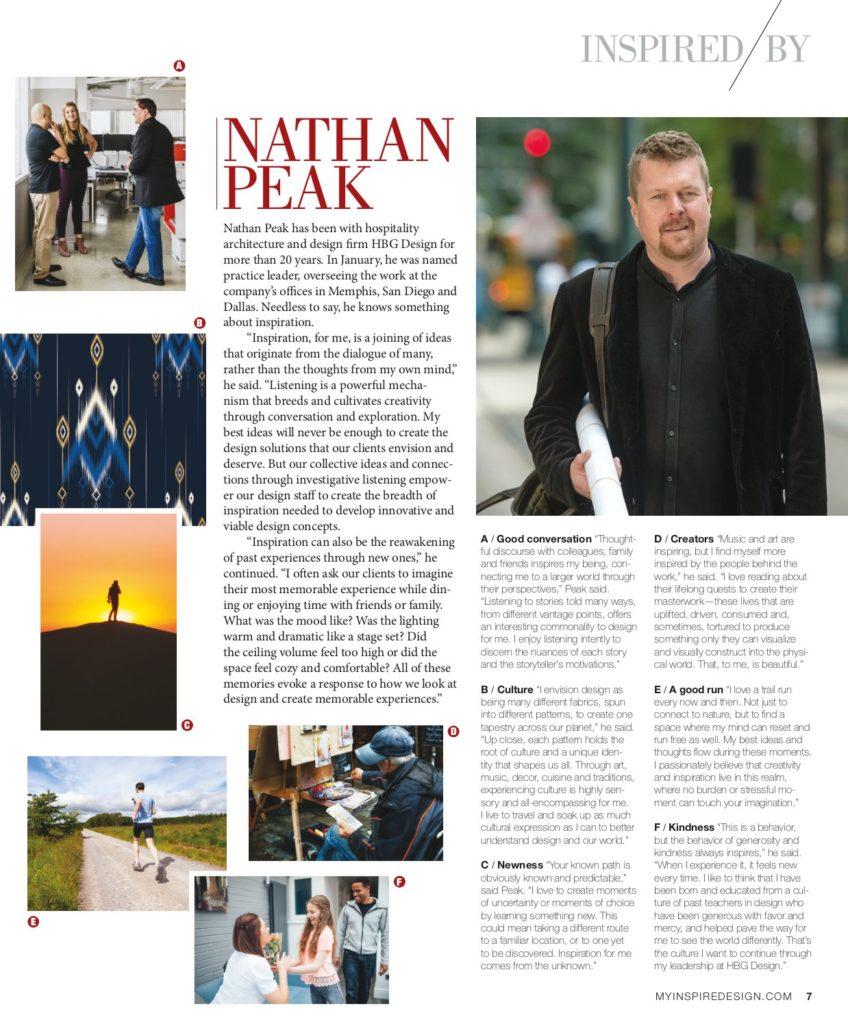
Nathan Peak has been with hospitality architecture and design firm HBG Design for more than 20 years. In January, he was named practice leader, overseeing the work at they company's offices in Memphis, San Diego and Dallas. Needless to say, he knows something about inspiration.
"Inspiration, for me, is a joining of ideas that originates from the dialogue of many, rather than the thoughts from my own mind," he said. Listening is a powerful mechanism that breeds and cultivates creativity through conversation and exploration. My best ideas will never be enough to create the design solutions that our clients envision and deserve. But our collective ideas and connections through investigative listening empower out design staff to create the breadth of inspiration needed to develop innovative and viable design solutions.
"Inspiration can also be the reawakening of past experiences through new ones," he continued. "I often ask our clients to imagine their most memorable experience while dining or enjoying time with friends or family. What was the mood like? Was the lighting warm and dramatic like a stage set? Did the ceiling volume feel too high or did the space feel cozy and comfortable? All of these memories evoke a response to how we look at design and create memorable experiences.
Astral Spa at Oaklawn Racing Resort Featured in 'Spa Business' Magazine
See full article in Spa Business Magazine
Interior Design by HBG Design.
Astral Spa inspired by Roaring 20s opens in historic Hot Springs National Park
21 APR 2022 . BY MEGAN WHITBY
Celebrated as one of America’s most popular spa destinations, Hot Springs National Park in Arkansas has gained a new spa and wellness destination.
 The new 8,000 sq ft Astral Spa has opened at Oaklawn Racing Casino Resort and has been designed with a nostalgic ambience inspired by the city’s past and Oaklawn’s history of thoroughbred horse racing.
The new 8,000 sq ft Astral Spa has opened at Oaklawn Racing Casino Resort and has been designed with a nostalgic ambience inspired by the city’s past and Oaklawn’s history of thoroughbred horse racing.
Hot Springs National Park is known for its 47 natural thermal springs and history of bathing, showcased by Bathhouse Row, a high street turned tourist hotspot with eight original bathhouses from the 19th- and 20th-centuries.
“Our vision was to create a unique spa experience that regional guests have never seen before,” says Oaklawn president Louis Cella, whose family has owned and operated the resort for over 100 years. “With multiple amenities, the spa offers a throwback vibe with modern luxury.”
Marrying crisp modern lines with historical overtures, Astral Spa’s design was led by HBG Design and WTS International. Spa consultant and operator WTS International also developed the spa’s treatment menu and is operating the spa.
“Relaxing in the lounges, we want our guests to imagine what Hot Springs was like in the Roaring 20s yet be in contemporary comfort,” adds Cella.
 The guest journey begins in a reception area complete with an illuminated quartz crystal wall designed to reference the area’s history of crystal mining.
The guest journey begins in a reception area complete with an illuminated quartz crystal wall designed to reference the area’s history of crystal mining.
The spa then splits into separate female and male spas each with distinct parlours, changing rooms and thermal lounges featuring vintage-inspired 360-degree vintage-inspired needle showers.
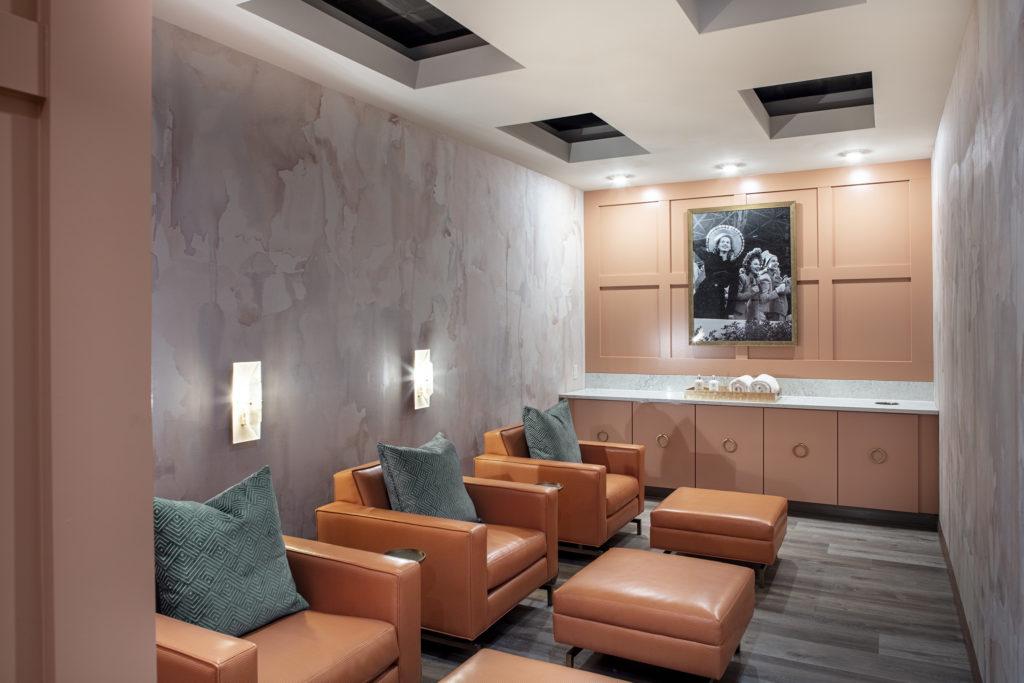 Both areas are equipped with contrast bathing circuits where guests can cycle through steamrooms, infrared saunas, ice lounges, vitality pools and thermal lounge areas.
Both areas are equipped with contrast bathing circuits where guests can cycle through steamrooms, infrared saunas, ice lounges, vitality pools and thermal lounge areas.
Guests can also relax in the open air at either the spa’s new outdoor pool with cabanas or outdoor event lawn.
The offering is rounded out with a 750 sq ft salon and a co-ed lounge with upholstered chaise lounges and a Himalayan salt wall. A fitness center equipped with LifeTime Fitness equipment is also on offer.
“Leading the design of The Astral Spa has been a career highlight, having grown up in a small town about 20 minutes from Oaklawn,” says Landon Shockey, IIDA, NCIDQ, lead interior designer at HBG Design. “I remember touring Bathhouse Row when I was younger and being absolutely intrigued by those grand spa spaces. To be able to return to Hot Springs and work with Louis and Rochelle Cella to create a modern-day bathhouse spa was a dream come true.”
“Thoughtful design, attention to detail and visual sophistication – these are the drivers of today’s experiential luxury, and that’s what the team achieved in the Astral Spa’s design,” says Emily Marshall, IIDA, NCIDQ, principal and interior design director at HBG Design.
“It’s less about opulence and more about wellness and the way a space makes the guest feel, with more authentic, locally-inspired design features and smart design touches.”
Click to see more about Astral Spa at Oaklawn Racing Casino Resort.
New Four Winds Casino New Buffalo Sportsbook Lounge is Designed for Comfort
Four Winds New Buffalo Casino Resort's newest amenity, the Sportsbook Lounge made the cover of the latest Tribal Government Gaming issue and was prominently featured in the "Sports of All Sorts" article. A small excerpt is below.
Sports of All Sorts
By: Roger Gros
See full article in Global Gaming Business' Tribal Government Gaming issue
https://issuu.com/globalgamingbusiness/docs/tribal_government_gaming_2022
Retail or Mobile
A retail book will soon become a staple for tribal casinos as sports betting continues to grow across North America. There’s really nothing like the excitement of an NFL Sunday or March Madness inside your casino when players can bet money on the games.
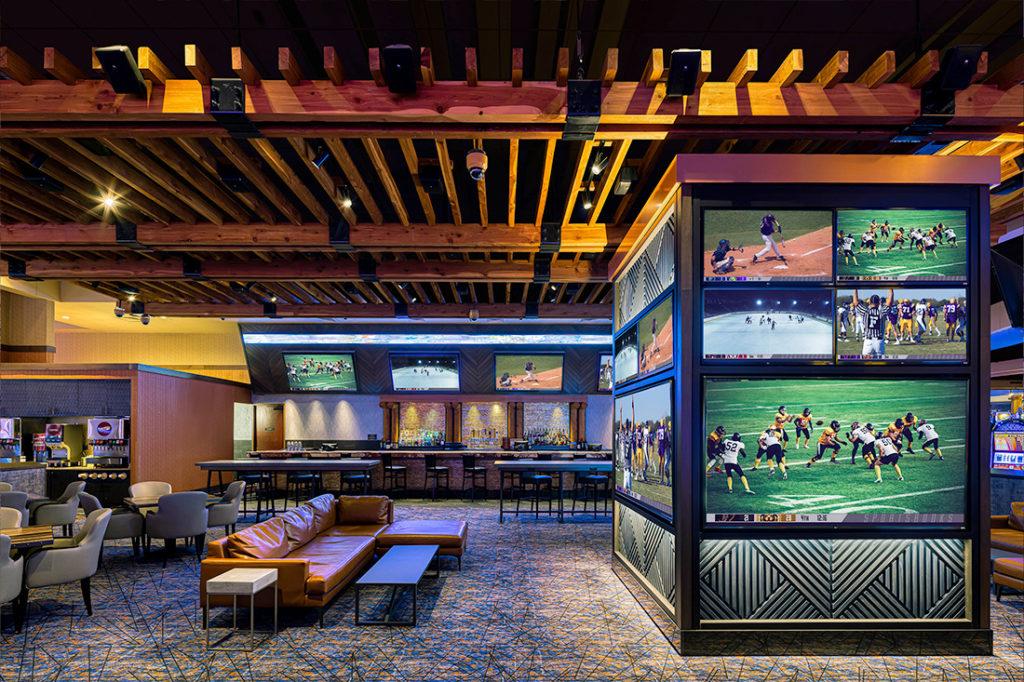 Most tribal sportsbooks won’t look anything like the Superbook at the Westgate in Las Vegas or the world’s largest sportsbook at the Circa in Downtown Las Vegas. But that doesn’t mean the excitement level will be anything less.
Most tribal sportsbooks won’t look anything like the Superbook at the Westgate in Las Vegas or the world’s largest sportsbook at the Circa in Downtown Las Vegas. But that doesn’t mean the excitement level will be anything less.
When HBG created the sportsbook at the Four Winds casino in New Buffalo, Michigan, it was designed for comfort. The Sportsbook Lounge is adjacent to the casino floor to take advantage of the surrounding gaming excitement. It’s designed to be a comfortable yet active retreat where guests can watch football, basketball, baseball and hockey action, while never having to leave the gaming floor environment.
The lounge’s custom layout and design provide sports fans with a comfortable ambiance to enjoy a beer while cheering on their favorite teams on any of the venue’s 22 televisions. Above the bar and on a large-scale central column are eight 85-inch, six 65-inch and eight 43-inch screens for ideal viewing from sectional sofas and lounge chairs, casual dining tables with chairs, and bar stool seating at the large sports bar.
Frank Freedman, chief operating officer of Four Winds Casinos, says the response of the customers has been very positive.
“We feel the layout, design and finishes will provide guests with the right ambiance, comfortable seating options and splendid views of multiple screens to enjoy a refreshing beverage or cocktail while cheering for their favorite teams,” he says. “Every addition we’ve made to our Four Winds Casinos locations has been for the sole purpose of enhancing the guest experience, and we’re thrilled to be able to offer this new amenity at Four Winds New Buffalo.”
Eagle Mountain Casino Named Top Tribal Project for 2022
See full list of Top Tribal Projects for 2022 in Tribal Government Gaming
HBG Design is excited to share that Tribal Government Gaming Magazine has selected Eagle Mountain Casino in Porterville, California as a Top Tribal Project for 2022.
Creativity & Innovation
The maturation of tribal gaming means constant change. Sometimes it’s a move of location, other times it’s enhancing what you already have. The tribal casinos that qualified this year are indicative of the changes in gaming overall. The legalization of sports betting and its introduction to existing tribal casinos have meant some creative use of existing spaces. The addition of amenities like hotel rooms and suites, high-class restaurants, spas and pools and more have given tribal casinos more of a resort feel, allowing them to compete for new customers whose entertainment wallets are ever-evolving. Congratulations to all the designers, thought leaders and tribal gaming operators who envisioned these amazing changes.
Right Place, Right Time
Eagle Mountain Casino, Porterville, California
Location, location, location,” says Joe Baruffaldi, AIA, principal/project manager at HBG Design, and leader of HBG Design’s San Diego Office.
“HBG Design’s client, the Tule River Tribe in California, is relying on their relocation to a high-visibility property in order to up their game and cement their reputation as a significant competitor in their regional gaming market just southeast of Fresno.”
The relocation of the casino from the reservation to a higher-traffic, higher-visibility area in Porterville, California creates a more conveniently accessible entertainment experience for their local customers, he says. It also opens new opportunities to capture destination traffic and overnight guests traveling between Fresno and Bakersfield.
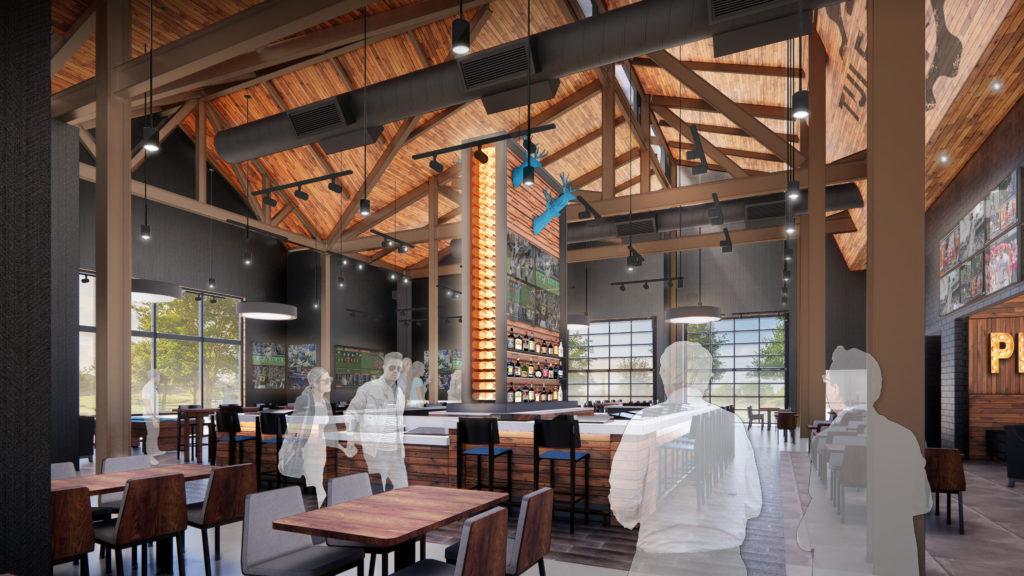
The new 105,000-square-foot casino property will offer 1,750 slots, 20 table games and a choice of four dining options, including a steakhouse, diner, café and sports bar and grill. A 2,000-seat event center and a 125-room hotel also will be added.

According to Baruffaldi, designers merged storytelling concepts based on significant Tule River tribal cultural elements with amenities and distinctive venues designed specifically for the Porterville gaming customer.
Key design concepts are rooted in the land and agrarian context of Tulare County and central California. The design is heavily influenced by a lodge aesthetic with wood and stone structural expressions. Inside, guests will experience an abstract depiction of the Tule River Tribe’s native traditions through art, patterns and imagery.
Soaring vertical features will recall the majesty of the giant sequoia and the golden eagle, each important representations of tribal culture. Flowing forms will recall the winding Tule River and organic curves of nature.
HBG’s design of the Eagle Mountain Casino feels connected to the woodland. Natural materials and colors help bring a sense of comfort for guests arriving at the property, for an overall relaxed and welcoming experience.
https://issuu.com/globalgamingbusiness/docs/tribal_government_gaming_2022
Tribal Gov't Gaming: Indian Gaming is Bouncing Back
See full article in Tribal Government Gaming
by Dave Bontempo
Tribal projects and gaming revenues rebound in the post-pandemic world
Bring back the aggressive gaming approach.
Tribal leaders and design firms say the “be-safe” phrase is morphing into “go-big” for the new post-pandemic world. Pent-up demand meets the resumption of competition, requiring tribal leaders to perform a balancing act. Operators seek the sweet spot incorporating must-see attractions, comfortable environments and realistic budgets.
As the American market emerges from Covid-19, projects become more forward-looking, far-reaching and sophisticated. Some of the nation’s most prominent companies help tribal leaders step forward.
Project Optimism
HBG Design unveils several operations with tribal leaders positioning themselves both for near-term and long-term success. Dike Bacon, principal, notes that U.S. commercial gaming revenues set an all-time record in gross revenue of $53 billion in 2021.
If this is any indication of the health and vitality of the Indian gaming industry (NIGC has not released 2021 figures), business is booming, he says. “Visit any casino in almost any domestic market and customer traffic is extraordinarily strong—inflation notwithstanding—and you see that demand is there,” he says.
Drivable trips are answering the call of most travelers’ curiosity, which has fueled the need to create fresh and exciting offerings in regional markets where many tribal casinos are located, he adds.
“Competition and location are often the driving forces behind whether a property needs a ‘must-see attraction’ as a differentiator and a draw, but any such ‘wow factor’ has to align with the property’s brand and target audience,” Bacon says.
“I’ll give you an example—we’re designing a distinctive feature attraction for events, music, daytime leisure and active nightlife, as part of a tribal casino resort expansion. The property has a formidable reputation as a leading entertainment and gaming destination, located within 30 miles of a metro feeder market of over 1 million people.
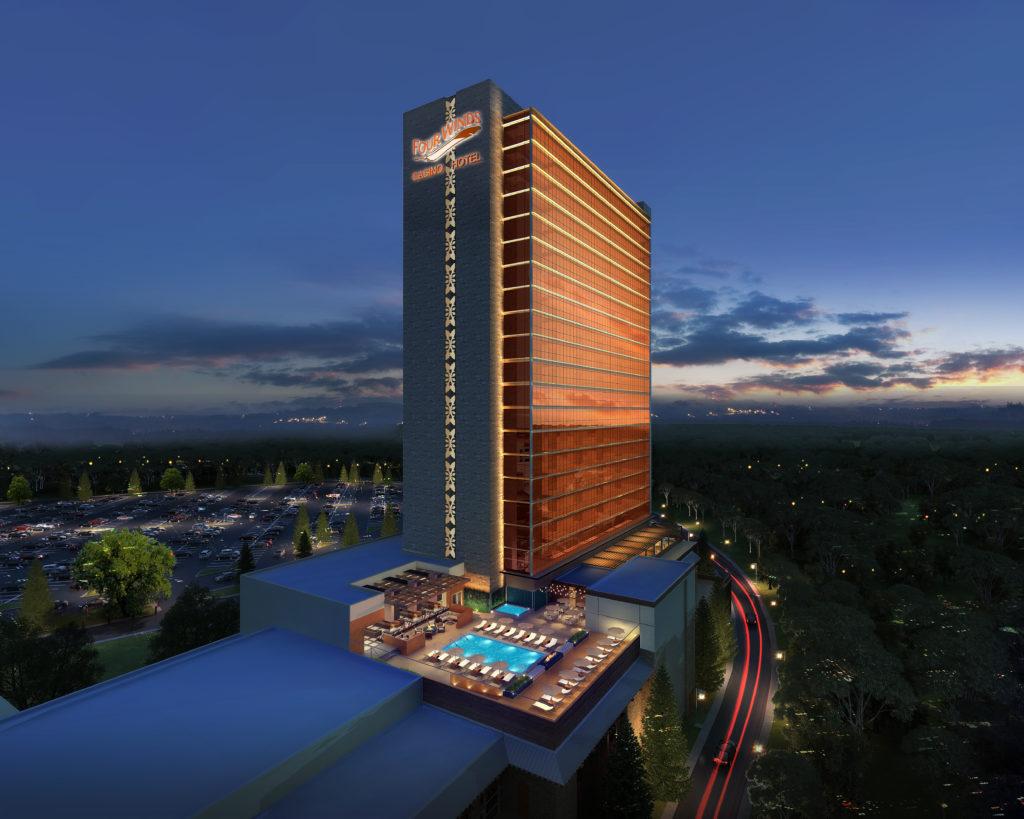
“Properties like this are able to support large-scale, high-impact, must-see attractions when their location combines a vibrant, diverse local population base and access to an equally strong destination customer who is willing to drive farther and stay longer to experience a distinctive amenity that is unmatched in the regional market.”
Bacon says HBG seeks innovative ways to help clients do more with less.
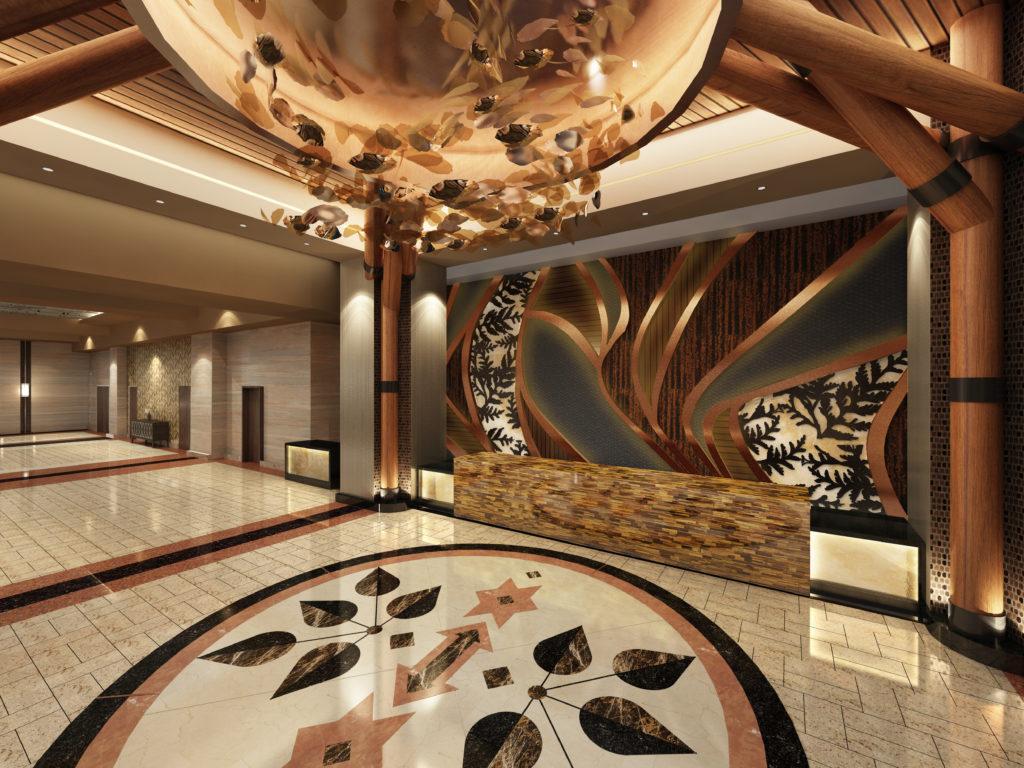
“This challenge covers a lot of ground, from designing public spaces and guest rooms that are easier and faster to clean and service to moving towards automation in concierge and casino hotel check-in,” he says. “Clearly, one of the biggest challenges for operators is to capitalize on current demand while still offering a great entertainment and hospitality experience with impressive customer service. Staffing in the entire hospitality industry (not just gaming) has been incredibly challenging.”
HBG designers work alongside owners to address these pressing issues. This includes creating more efficiently designed spaces that are exciting and entertaining but can also be operated with less staff.
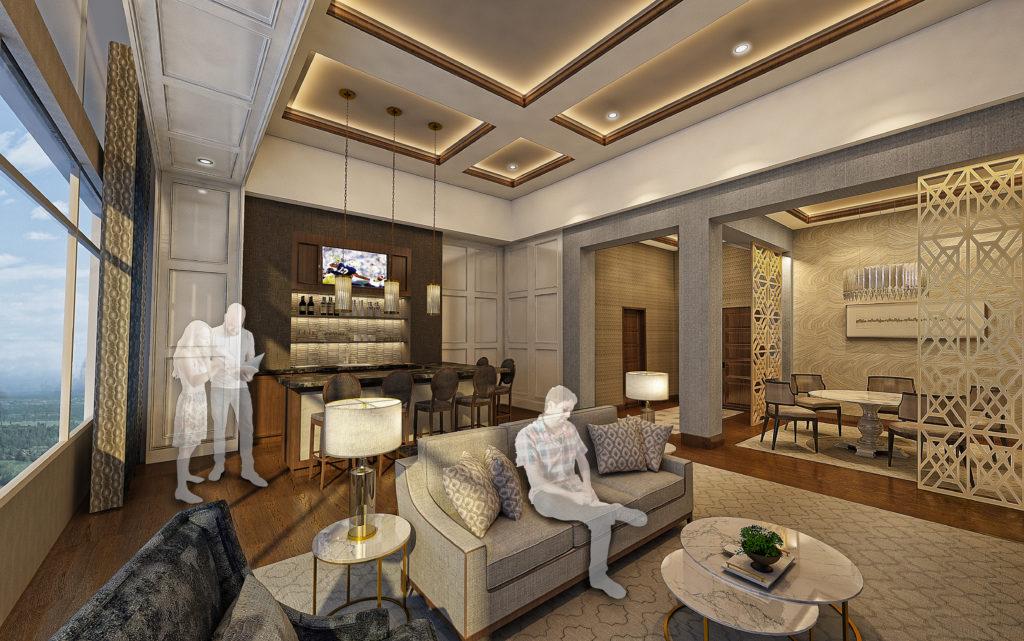
“We’re creating more efficient kitchens and more diverse means of providing F&B to customers, including self-service and take-out venues. Valet parking is another key service area affected by staffing shortages,” says Bacon.
“More customers may be encouraged to self-park instead of valet, which means designing and locating parking garages that are more convenient, secure and customer-friendly. It also gives rise to designing more elevated and exclusive VIP entrance experiences reserved for a property’s best players, creating a smaller staffing pool to focus service on the largest contributors to the casino’s bottom line.”
Nathan Peak, AIA, LEED GA, practice leader/principal of HBG Design, says pent-up demand for entertainment and hospitality experiences motivate tribes to upgrade underperforming areas of their facilities.
“Given the performance of the industry and how it is bouncing back from the pandemic, we are confident that owners will remain in expansion and renovation mode for a while,” Peak says. “A client recently told us that their gaming resort property will likely be in a continuous state of evolution, renovation and building over the next several years to stay fresh for guests and maintain relevancy in the market.”
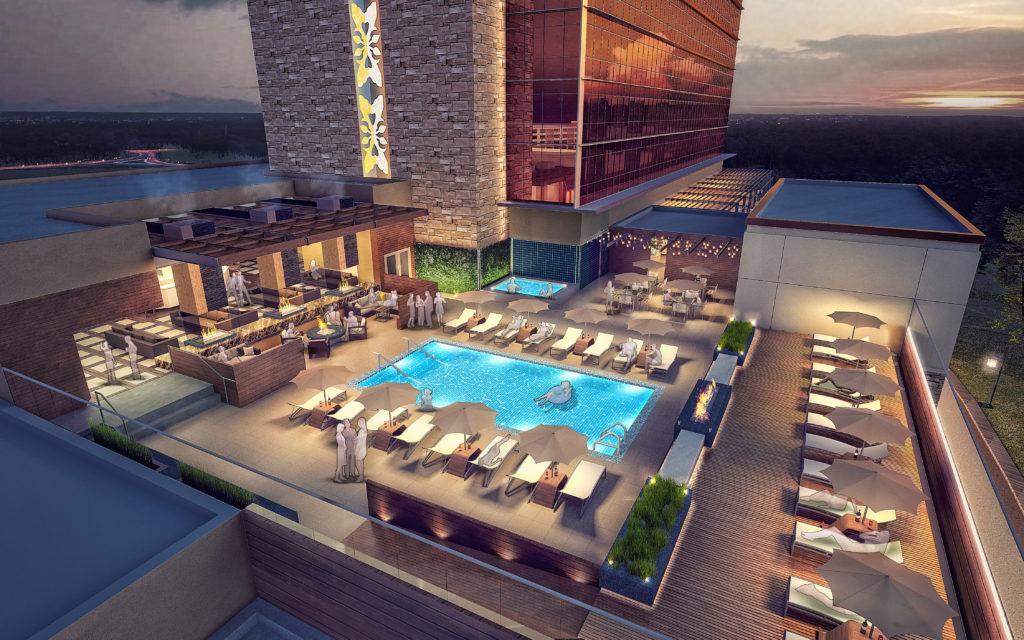
Another major influencer of the “continuous state of evolution” mindset is the continued passing of new legislation that drives change in tribal—and commercial—gaming properties, says Peak. As more states pass sportsbook legalization, that sets up new priorities for gaming properties who need “must-have” amenities to compete.
Tribes Take Assertive Stance
“Tribal gaming is definitely staying aggressive in terms of maintaining market share, especially in areas of the country where commercial gaming is growing and evolving,” adds Joe Baruffaldi, AIA, principal/project manager at HBG Design, and leader of HBG Design’s San Diego office.
“Tribes realize that knowledge is power; it’s what fuels a competitive edge,” he says. “There’s a greater need today for tribal casino owners to understand the nature of their customer base and harness the power of that knowledge—appreciating and leveraging not only where guests are coming from, but who they are as consumers.
“We partner with tribal gaming clients by helping them envision what the ‘tomorrow of their market’ looks like. When we’re able to anticipate changes in the marketplace, we can proactively respond by leading our clients to more competitively positioned design solutions.”
One of the highlights for HBG over the last few years has been its involvement in in the Four Winds South Bend casino in Indiana. The property is owned by the Pokagon Band of Potawatomi Indians, which operates three other casinos in Michigan.
Four Winds Casino embarks on a large-scale expansion of its South Bend property, designed by HBG, offering approachable luxury within a new 23-story, 317-key, 83-suite hotel tower.
The project includes a mix of vibrant amenities, to include a spa, convention area, meeting space, a ballroom, lounge, bar and grill, an outdoor rooftop swimming pool, and terraces with spectacular views.
The design incorporates regional elements and warm, rustic details with special attention and references to tribal influences and symbolism.

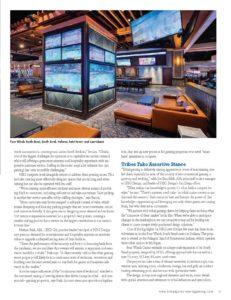
https://issuu.com/globalgamingbusiness/docs/tribal_government_gaming_2022
Indian Gaming magazine features new Four Winds Casino amenities
The entertainment industry is seeing pent-up demand for entertainment and hospitality experiences. As a result, Owners are investing in upgrades to their facilities to maintain their competitive positioning. Indian Gaming magazine features two new HBG-designed amenities at Four Winds Casino Resort in New Buffalo, Michigan, and South Bend, Indiana, for the Pokagon Band of Potawatomi Indians.
See full article in Indian Gaming Magazine
Sportsbook Lounge at Four Winds New Buffalo Casino Resort Pokagon Band of Potawatomi New Buffalo, Michigan Designed by HBG Design
Located on the gaming floor, the Sportsbook Lounge at Four Winds New Buffalo is designed to appeal to customers wanting an exciting, immersive experience. Twenty-two high-definition TVs provide ultimate opportunities to watch the sporting action unfold. Comfortable, inviting sectional sofas, lounge chairs, casual dining tables, and bar stool seating complement a natural palette, stone textures and intricate patterning for aesthetic consistency with other brand elements.
The Poker Room at Four Winds South Bend Casino Resort Pokagon Band of Potawatomi South Bend, Indiana
The new poker room design at Four Winds South Bend imparts a multi-layered dimensional experience. To achieve the effect, designers used warm on-brand tones to complement stone-base columns and grand textural wooden ceiling elements. Alternating wood walls and patterned screening partitions set the poker room apart from the main casino floor. Column sconces and carpet feature representations of regional foliage. The poker room is a large, bright and comfortable setting for Four Winds South Bend’s latest table game offering.

